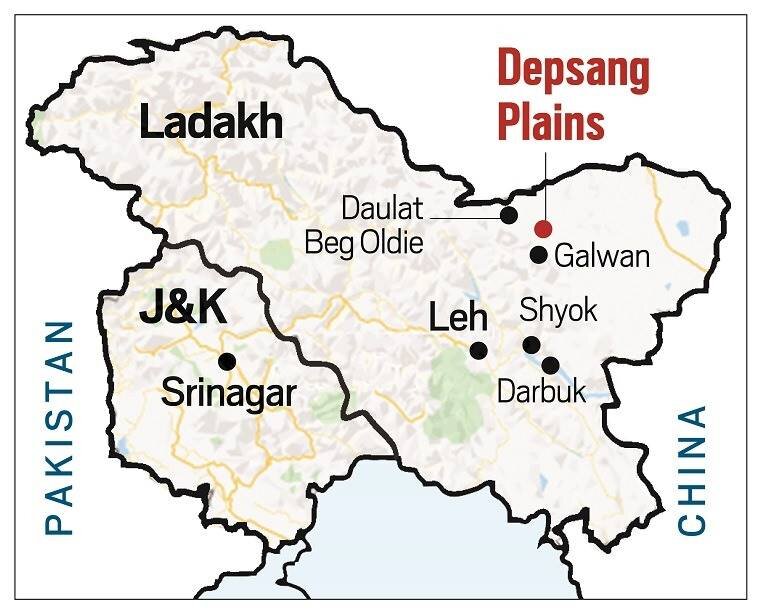Depsang Plains | 12 Aug 2020
Why in News
Recently, India and China have held talks at the Major General-level to discuss issues concerning the strategic Depsang Plains.
- The talks were held at Daulat Beg Oldie (DBO) and were limited to Depsang to discuss issues of varying claims and also blocking patrols by each other.
Key Points
- About the Meeting:
- This was the first high level talks post Galwan clash of 15th June 2020.
- Military talks since then have been limited to Corps Commander level.
- The meeting only discussed routine patrolling patterns by both sides as part of border management leaving aside disengagement or de-escalation.
- This was the first high level talks post Galwan clash of 15th June 2020.
- Depsang Plains:

- The Depsang Plains along with Pangong Tso are the two major areas of concern in the ongoing standoff along the Line of Actual Control (LAC) in eastern Ladakh.
- Despite the strategic importance of the Depsang Plains, the series of military talks held so far have focussed on the standoff areas at Galwan, Gogra Hotsprings and Finger area of Pangong Tso.
- Depsang is one of the few places on the LAC where tank manoeuvres are possible.
- During the 1962 war, Chinese troops occupied the Plains. In 2013, Chinese troops came 19 km inside and pitched tents resulting in a 21-day standoff.
- Issues:
- There is a heavy Chinese presence at a crucial area called the Bulge, in the Depsang Plains.
- Chinese troops have blocked the Indian Army patrols from reaching the various patrolling points.
- There has also been a build-up of tanks and armoured vehicles on the Chinese side very close to the LAC.
- Threats:
- It threatens Indian positions at Burtse and Raki Nala inside Indian territory and further DBO by bringing Chinese troops closer to the 255 km long crucial Darbuk-Shyok-DBO road.
- Depsang is also close to the Karakoram Pass, overlooking the very strategic Saltoro Ridge and Siachen glacier.
- Challenges:
- While addressing the India@75 Summit organised by the Confederation of Indian Industries (CII), the External Affairs Minister of India held that reaching an understanding with China is a huge challenge before Sino-Indian relations.
- Both countries are demographically very unique with the billion-plus populations.
- There is a parallel but differential rise happening at a time when both are neighbours as modern states which puts a huge premium on reaching some kind of equilibrium or understanding between the two.
- While addressing the India@75 Summit organised by the Confederation of Indian Industries (CII), the External Affairs Minister of India held that reaching an understanding with China is a huge challenge before Sino-Indian relations.
Way Forward
- Finding a balance or equilibrium is very central and crucial for Indian foreign policy calculation.
- At this moment, it is particularly important to revisit the original aspiration of establishing diplomatic relations 70 years ago and carry forward the spirit of good neighbourliness and friendship, unity and cooperation.
- India and China are amongst the largest economies, demography, markets and militaries of the world. Therefore, it is in the interests of both the countries to align their energies for the growth and development of their people, region and global peace.
